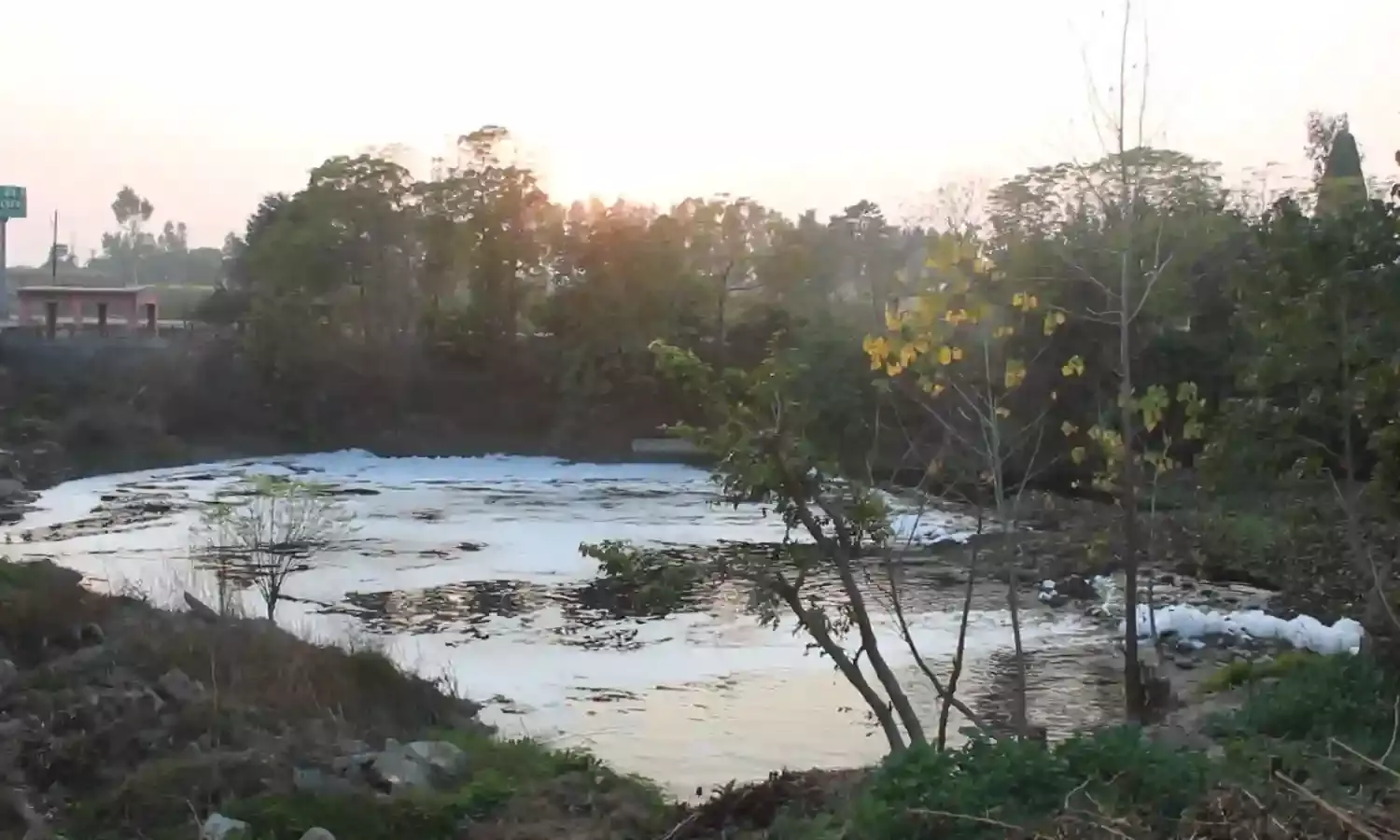
Nangal village in Uttar Pradesh is suffering from water contamination, villagers say, because the administration’s failure to reopen a dam is making arsenic-laced water leach into the groundwater.

The village in Baghpat district’s Baraut Tehsil has a population of 4,187 and with no other sources of water, residents are forced to tap groundwater through wells and tubewells.
At least one person in each household is suffering from cancer, physical deformities or cardiovascular disease, according to retired senior scientist Chandraveer Singh.
Villagers say the water in the dam is contaminated by chemicals released by factories and slaughterhouses upstream.
According to Meerut-based lawyer Saksham P, “On an average 10-15 deaths happen every year because of problems caused by the water. The NGT directed the government to stop the discharge from factories to the river. The government did not follow NGT’s directions.”
He said the National Green Tribunal also “directed the district administration to remove the handpump provided by the government and to provide 30 litres filtered water to every household without any cost.”
The NGT even ordered the Department of Water Resources to provide clean water to the village but the board has failed to implement the order, he added.
The decision came after the not-for-profit Doaba Paryavaran Samiti filed a petition after testing the water in the area.
In an independently conducted test Chandraveer Singh, former member of the Haryana State Pollution Control Board, found that arsenic, cadmium, chromium, lead, mercury, nitrate and other toxic metals and compounds were present in the water.
“If the metals are consumed for long, it causes cancer and that is precisely what is happening in Nangal. We also identified eighty different types of diseases in people who reside near the Krishna river. This is very dangerous for the people living in that area,” said Singh.
“Our village and surrounding villages give the best sports players to the state and in return, the Uttar Pradesh government is not capable of giving us clean water to drink,” says social activist Puneet Bhardwaj.
“Parliament Council, MLA, DM office, SDM office, and Baghpat SP, I have written to everyone. Nobody helps us. I tried to reach Gajendra Singh Shekhawat who is the [Union] minister of Jal Shakti and Harsh Vardhan who is a former Union minister for the health and family welfare of India but no one responds.”
According to Indrapal Choudhary, who has been living in the village for 45 years and works as a daily wage labourer, there are no doctors available in the vicinity.
“My nephew Vasu was just like a normal child when he was born. Today, he can’t even walk. He is suffering for the past 14 years. Even the doctor said there is no remedy for him. I believe the reason for his handicapped condition is the water. The whole village is aware of the condition of water still we drink this poison every day.”
Even the animals are getting affected, says Choudhary.
“A higher level of arsenic can be really harmful. The toxic elements get dissolved in the water and because of that bacteria starts developing and the biochemical oxygen demand of the water starts decreasing at higher rates. This in turn affects the aquatic life too,” says Agni Dutt Sharma, who holds a degree in chemistry and retired as principal of the Kendriya Vidyalaya in Delhi Cantt.
“If you keep the water in the basin for some time it turns yellow. This is the condition of the water we use. The water stinks and tastes bitter. When I work in the fields, I prefer drinking the water from Doghat, a town near my farm,” says Vedpal Choudhary, a farmer who is suffering from cancer.

